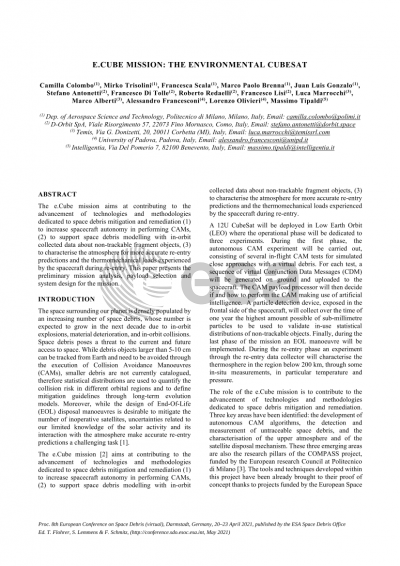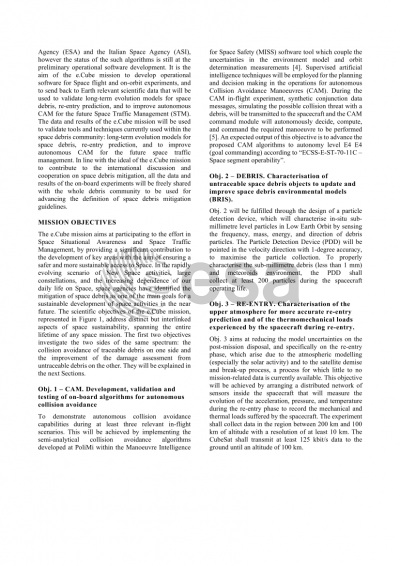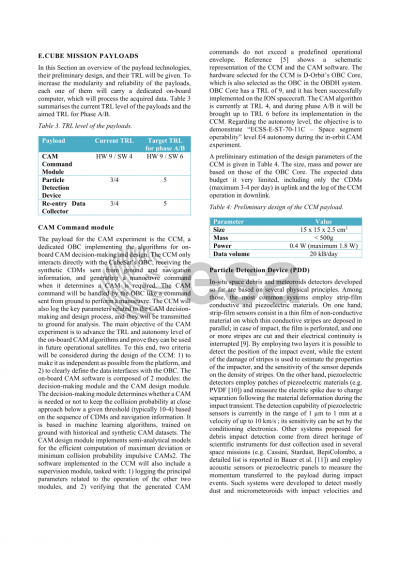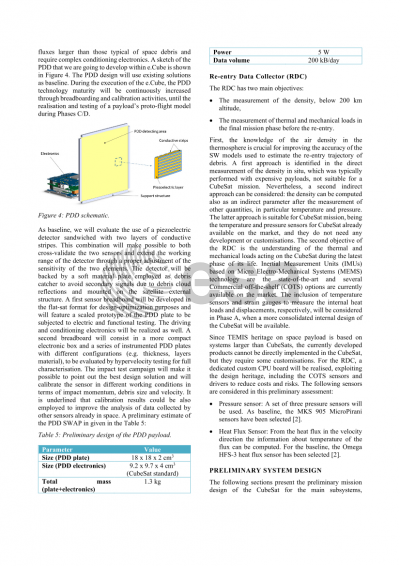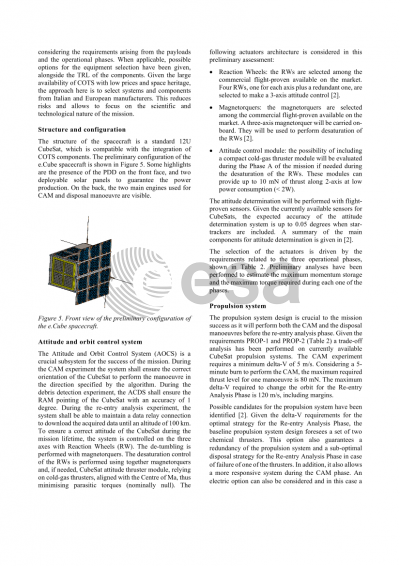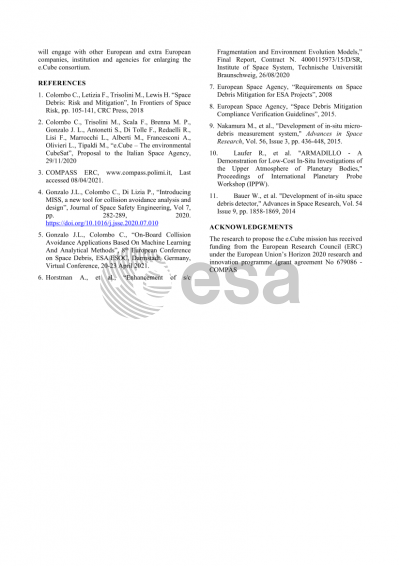Document details

Abstract
The space surrounding our planet is densely populated by an increasing number of space debris, whose number is expected to grow in the next decade due to in-orbit explosions, material deterioration, and in-orbit collisions. Space debris poses a threat to the current and future access to space. While debris objects larger than 5-10 cm can be tracked from Earth and need to be avoided through the execution of Collision Avoidance Manoeuvres (CAMs), smaller debris are not currently catalogued, therefore statistical distributions are used to quantify the collision risk in different orbital regions and to define mitigation guidelines through long-term evolution models. Moreover, while the design of End-Of-Life (EOL) disposal manoeuvres is desirable to mitigate the number of inoperative satellites, uncertainties related to our limited knowledge of the solar activity and its interaction with the atmosphere make accurate re-entry predictions a challenging task.
The e.Cube mission aims at contributing to the advancement of technologies and methodologies dedicated to space debris mitigation and remediation (1) to increase spacecraft autonomy in performing CAMs, (2) to support space debris modelling with in-orbit collected data about non-trackable fragment objects, (3) to characterise the atmosphere for more accurate re-entry predictions and the thermomechanical loads experienced by the spacecraft during re-entry.
A 12U CubeSat will be deployed in Low Earth Orbit where the operational phase will be dedicated to three experiments. During the first phase, the autonomous CAM experiment will be carried out, consisting of several in-flight CAM tests for simulated close approaches with a virtual debris. For each test, a sequence of virtual Conjunction Data Messages will be generated on ground and uploaded to the spacecraft. The CAM payload processor will then decide if and how to perform the CAM making use of artificial intelligence. A particle detection device, exposed in the frontal side of the spacecraft, will collect over the time of one year the highest amount possible of sub-millimetre particles to be used to validate in-use statistical distributions of non-trackable objects. Finally, during the last phase of the mission an EOL manoeuvre will be implemented. During the re-entry phase an experiment through the re-entry data collector will characterise the thermosphere in the region below 200 km, through some in-situ measurements, in particular temperature and pressure.
The data and results of the e.Cube mission will be used to validate tools and techniques currently used within the space debris community: long-term evolution models for space debris, re-entry prediction, and to improve autonomous CAM for the future space traffic management. In line with the ideal of the e.Cube mission to contribute to the international discussion and cooperation on space debris mitigation, all the data and results of the on-board experiments will be freely shared with the whole debris community to be used for advancing the definition of space debris mitigation guidelines.
Preview
